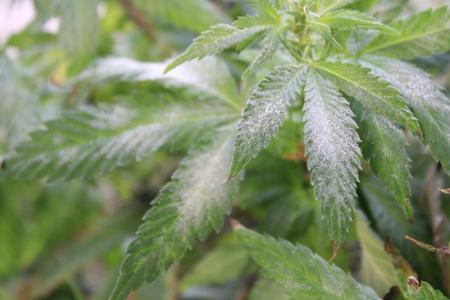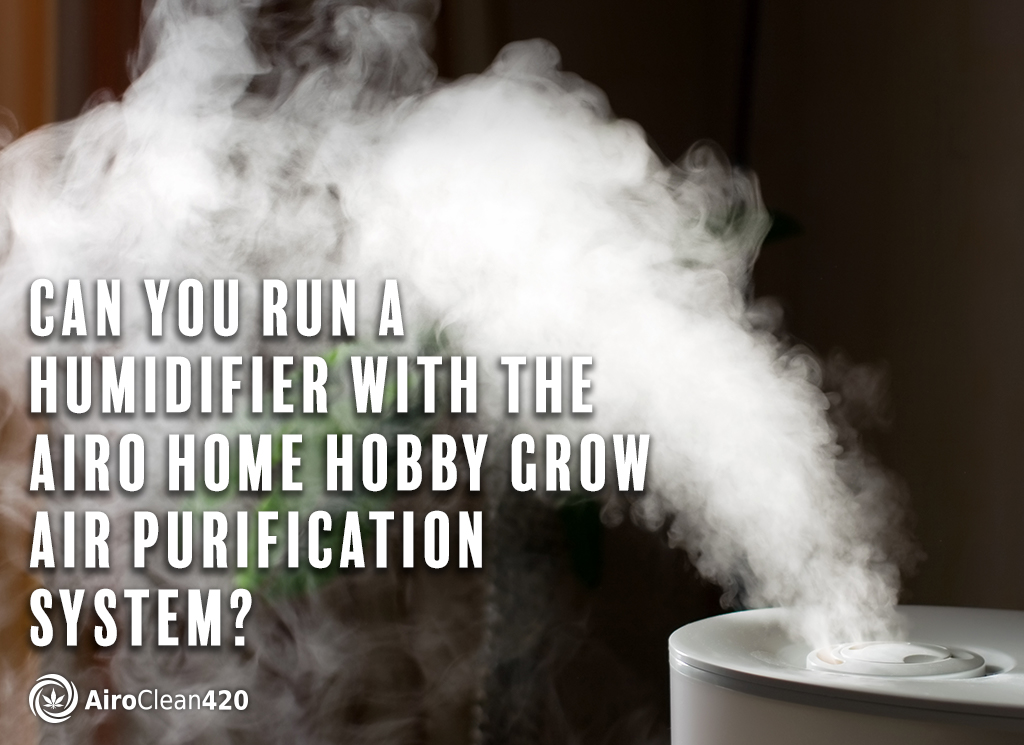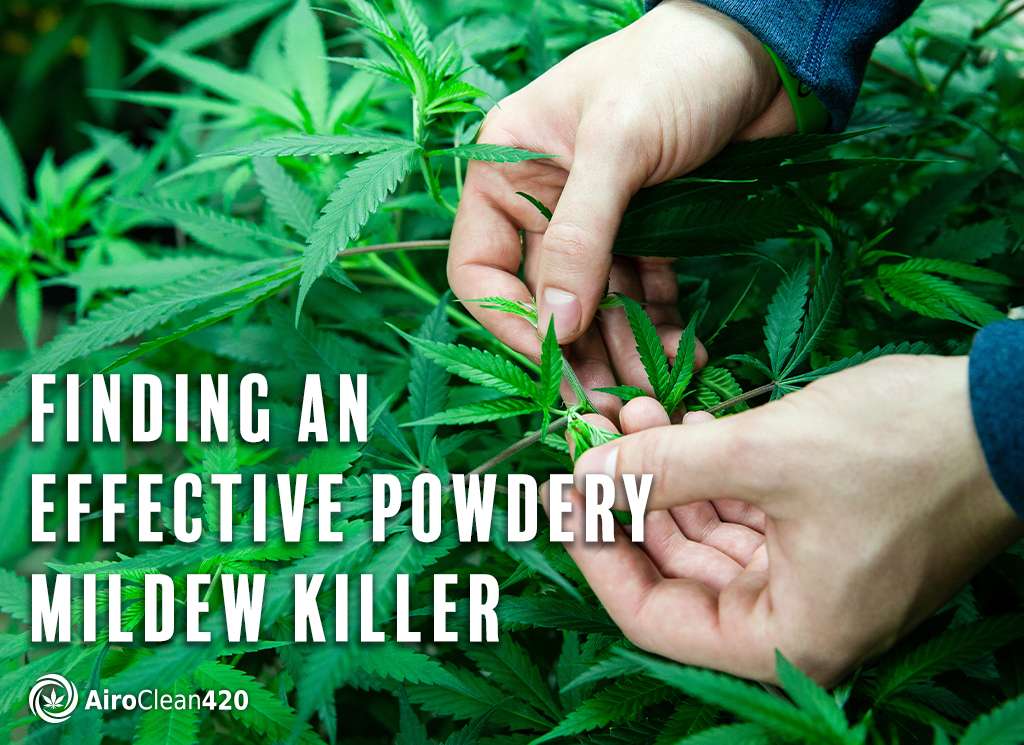
The question “is powdery mildew systemic?” is often asked by new and old cannabis growers alike. Cannabis growers rightly want to know if powdery mildew (PM) is a systemic infection or just a topical one. They also want to know if it is a treatable nuisance or a lost cause. While most cannabis growers over the past several years have believed PM is systemic, the question is still a hot topic.
Why’s that?
Until recently, knowledge and understanding in the cannabis cultivation world primarily passed through word of mouth and personal experience. The lack of accessible published information combined with the prohibited status of scientific cannabis cultivation research had created a network of growers doing their best to find answers and share what worked for them.
While this information sharing method has created a unique and beautifully interconnected cannabis cultivation community, it doesn’t mean growers always agree with each other. In fact, there are longstanding debates alive and well within the cannabis cultivation community, like whether powdery mildew is systemic or not. Classic cultivation conundrum!
Everyone knows getting rid of powdery mildew is challenging, and that an infestation can be an expensive set-up. The frustration of getting rid of it, only to have those telltale white spots return is, is also a common experience for growers. All growers do agree the devastating fungal pathogen exists, but they divide into two camps when it comes to exactly how it infects plants: systemic or non-systemic.
Before addressing their differences, consider what is agreed upon. Both camps acknowledge that powdery mildew is airborne and that PM sporulation (formulation of spores) occurs rapidly after the initial introduction of the pathogen. And that fans circulating air quickens infestations. Both camps believe PM is introduced into the grow room from outside air, from people having PM on their person (shoes, clothes, hat, etc), and from contaminated clones introduced to the grow space. The disagreement between the two camps begins with how the clones were infected. Camp “non-systemic” believes it is a surface-level infection. Camp “systemic” takes it a step further.
Camp “systemic” believes powdery mildew spores travel through the plant’s vascular system, thus making it a systemic infection.
The phrase “Once powdery mildew gets on your plant, it’s in your plant!” is commonplace to hear. Some cultivators would say “PM is a systemic airborne fungus.”
These claims are understandable. Many respected cannabis cultivation teachers have taught that “powdery mildew is a systemic infection.” Cannabis forums are loaded with questions like “What are solutions for systemically curing PM?” and advice that PM is systemic. Most powdery mildew posts in online grower forums are written with the assumption that PM is systemic. Additionally, many online grow help websites also reinforce the idea that PM is systemic, however, don’t ever reference studies or proof.
Where is the evidence?
Scientists have detected powdery mildew spores on plant leaves that do not yet show signs of affliction. This is evidence that some cultivators use to bolster their belief that powdery mildew is systemic. Researchers at Medicinal Genomics took four tissue samples from leaves without signs of infection from otherwise afflicted plants and found powdery mildew spores present. This finding appears to be hard evidence that spores travel from leaf to leaf within the plant itself, but these scientists acknowledged the presence of spores could have resulted from airborne spores or contact with other infected material.
Brandon Rust, cultivation director of Majestic Craft Cannabis and founder of Bokashi EarthWorks, brings up another reason people believe powdery mildew is a systemic infection. Brandon explains, “When conditions are correct for it, powdery mildew can flourish, especially on unhealthy plants. Most infected plants I see are not truly healthy and not expressing the plant’s genetic potential. Weak plants already fighting a great battle for their health do not have the energy necessary to resist further infection, leading some to believe that the underlying cause of powdery mildew is systemic as their already unhealthy plants appear to deteriorate in the presence of PM.”
Camp non-systemic believes powdery mildew infections are only transmitted through direct contact of spores on plant surfaces.
Kat Betty, Education Director at Green Carpet Growing has said,“We’re talking about a spore so powerful, so difficult to eradicate, that growers concluded it actually lives inside the plant itself. This viewpoint is certainly understandable, but incorrect.”
Matthew Gates, California IPM Specialist and Entomologist and Board Member of the Cannabis Horticultural Association weighed in sharing, “Is powdery mildew a systemic pathogen? False. According to the American Phytopathology Society, there are no species of PM that spread systemically. Another thing to consider is since PM infection relies on genetic susceptibility genes in their hosts, it could be said that this genetic facet is more fundamental than an environmental one.
Michele Wiseman, MSc, Plant Pathology on Medium.com recently shared, “Contrary to popular belief in the cannabis industry, powdery mildew infections are not systemic as they do not travel throughout the vascular tissue to produce new infections elsewhere in the same plant.”
She elaborated, “Occasionally, you may see necrotic (i.e. dying) tissue adjacent to a powdery mildew infection and a heavy infection will significantly reduce your plant’s vigor. Moreover, heavy outbreaks may weaken the plant and increase chances of secondary pathogen infections or pest infestations. Sometimes, outbreaks in confined spaces (such as warehouses or greenhouses) result in the rapid movement of infections on and across individual plants due to the air dispersal of asexual spores (often from circulating fans). In this sense, it may LOOK like a systemic infection, but in reality, air movement is just dispersing spores around your grow space.”
Even though powdery mildew on cannabis and in general is now better understood by science as non-systemic, it’s vitally important to remember the point is always prevention of PM. Prevention of PM has always been focused on fungicide sprays, proper humidity and air flow, but the best way to kill these airborne powdery mildew spores is through air purification / air sanitization. This strategy is effective whether or not PM is systemic.
Whether or not powdery mildew is systemic, AiroClean420 air purifiers are the most effective way to prevent powdery mildew by killing airborne PM spores.
The best tool cannabis growers have to prevent powdery mildew is Air Sanitization and Purification via PCO (Photocatalytic Oxidation) technology from AiroClean420. It’s all about prevention with PM and pests and disease.
AiroClean420 has already been preventing powdery mildew outbreaks in commercial cannabis cultivation for several years across North America. Cultivation Directors and Head Growers provide ongoing positive feedback and testimonials about its efficiency and impact regularly. It’s saving growers from stress and lost crops – I.E. — money!
Cody Henderson, Facility Manager/Cultivation Systems Design at Desert Horizon Cultivation Facility, Cathedral City, CA shared, “I have been designing and building cultivation facilities for over 18 years. It is a rare thing when a piece of equipment comes along that is truly indispensable. The AiroClean 420 is just that. I have installed these units in all cannabis related spaces in every facility that I have built since discovering them 3 years ago. From flowering and nursery rooms, to dry/cure and trimming/processing rooms. Simply put, I will not build, remodel, or manage a facility without these units.”
In addition to the cannabis industry, AiroClean420’s PCO technology is also in use in other industries including wineries, perishable food rooms, food processors, clean rooms, labs, and health care.
How does AiroClean420’s PCO technology work? Each unit uses a fan and a bio-conversion reactor bed. Inside the bed contains our proprietary NASA-originated catalyst to “clean,’ “sanitize” and “purify” the air. As air gets pulled through the unit and reaches the bio-conversion reactor bed, all spores are eliminated. Powdery mildew spores get obliterated on a subatomic level — which is about ten thousand times smaller than the width of a human hair. The only by-product is minuscule trace elements of water vapor and CO2. AiroClean420 is even listed as an FDA Class II Medical Device because all of its “kill” happens within the bio-conversion reactor bed with zero harmful emissions.
AiroClean420’s Airo Home Hobby Grow units are available for home growers, hobby growers and caregivers. Each Airo Home Hobby Grow unit can clean/purify/sanitize 1200 cubic feet of air, which is about the size of a 12 x 10 x 10 grow space. They are small enough to fit in a 4 x 4 grow tent, and you only need to turn it on to make it work, replace the filters every 3 months, and replace the lamp yearly. They are completely compatible with organic IPM and pest control practices.
Home growers, hobby growers and caregivers who are tired of fighting PM with just topical sprays, or who just want to kill PM the way professionals do, will benefit greatly by adding AiroClean420’s Airo Home Hobby Grow units to their gardening systems.
Please note, don’t stop applying your foliar fungicide sprays like Serenade, Trifecta or Plant Therapy, or others, if you use this product. You will couple your foliar sprays with air purification to ensure proper pest and disease prevention.
Put the word out, spread the news, and work smarter, not harder with AiroClean420’s Airo Home Hobby Grow Units for small grow spaces!
Ready to Stop Powdery Mildew?
Fill out a simple form to get pricing for AiroClean420.





